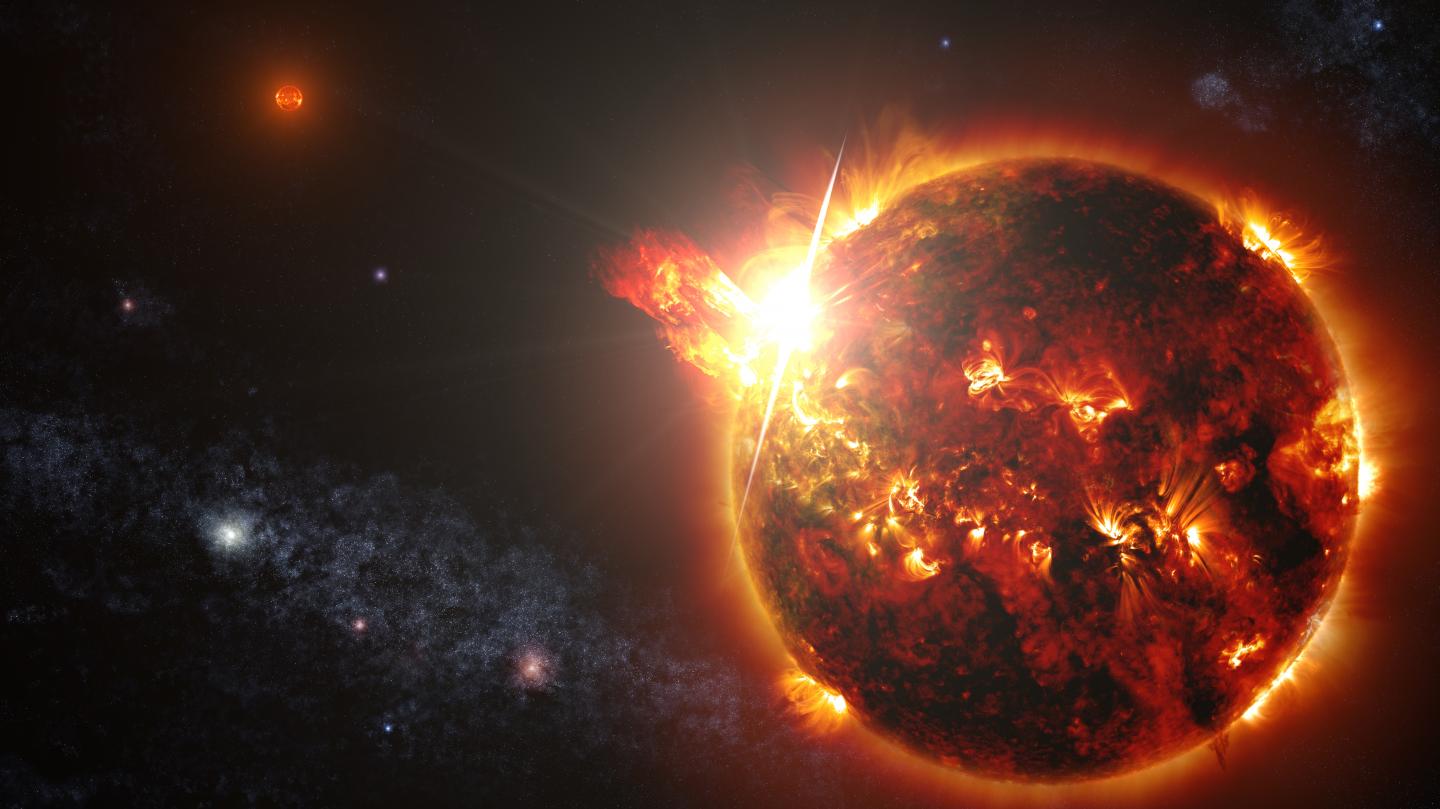We have it relatively easy on the Earth. Our Sun is relatively calm. The space weather environment in the solar system is altogether placid. Things are nice. But new research has shown that we may be the exception rather than the rule, and that many exoplanets face much harsher conditions than we do.
Stars are not simple things. They contain within their hearts cores of nuclear fusion powered by the gravitational weight of their own mass. This releases enormous amounts of energy which makes its way to the surface through radiation and giant convective plumes of material.
In addition to their complex interiors, stars are also spinning. The complex movement of all the plasma that makes up the bulk of a star’s mass triggers the formation of incredibly strong and tangled magnetic fields. Those magnetic fields in turn can dredge up material from the stellar surface and launch it into space.
The collective term for all the events that happen outside a star is called stellar weather or space weather. Space weather can take many forms. For example, it can just be the stellar wind, which is a steady drizzle of charged particles that constantly emanate from a star’s surface. It can also include the occasional flare, which happens when the tangled magnetic field lines around a star break. These flares release huge amounts of x-ray radiation. Sometimes those flares even pull up material from the stellar surface and launch it in this space in the form of a coronal mass ejection.
Astronomers around the world constantly monitor our own Sun for space weather. These solar-generated storms can affect orbiting satellites, crewed missions in space, and sometimes even overwhelm our own planet’s magnetic field and atmosphere, leading to dangerous consequences on the surface.
A new study surveying many different kinds of stars in many different stages of their life has shown that overall we have a pretty good. Our Sun is pretty mild with relatively infrequent outbursts. In contrast, the astronomers behind the study found that exoplanets typically suffer much more severe stellar weather than we do. Some of this is just due to random chance, because they happen to lay closer to their parent star than the Earth does around the Sun. And some of it has to do with the kind of star that they orbit. For example, small red dwarfs are much more turbulent and chaotic than our Sun, with some of them capable of suddenly increasing in brightness by over 50%.
In other cases it simply has to do with age. Young stars are much more temperamental than older ones. Planets around younger stars experience much more extreme space weather events then those around more mature systems.
All told, it seems that we should simply count ourselves lucky.


Maybe there is a mislink in the article, the new study of “astronomers” point to a short qualitative review that an astronomer made from a conference review talk.
The nicely quantitative paper by Pietras et al. is maddingly imprecise on the expert context. But assuming they work from the hypothesis of flare stars – presumably a specific category of “variable star that can undergo unpredictable dramatic increases in brightness for a few minutes” as Wikipedia puts it – their claims agree with the article here. “The percentage of flaring stars could be even greater than 50% for the stars of spectral type M.”
I meant to add that the quantitative study found that 8 % of surveyed stars were flare stars. Based on temperature TESS is biased towards observing hotter stars, but at a guess calm Sun-massed stars aren’t very rare.
Finally, I noted that the qualitative review had a more balanced analysis of geodynamo field consequences than I’m used to see:
“Although the planetary magnetic “bubble” can prevent direct interaction between
the stellar wind and the entire atmosphere of the planet, its protective effect has been
questioned recently (Brain et al. 2013). The magnetosphere (assuming a dipolar field)
consists of regions of closed field lines and regions of open field lines. The open field line
regions do not provide a shield against stellar wind particles – in fact, an inflowing stellar
wind can be channeled towards the polar regions through open magnetic field lines. This
could then lead to increased local heating which would enhance atmospheric evaporation
through polar/auroral flows. This then leads to the question whether a magnetic field
could lead to retention of planetary atmosphere (the shield scenario) or could enhance
atmospheric loss (the polar flow scenario).
Maybe the answer is not a clear cut distinction between both arguments, but rather a
combination of them. Blackman & Tarduno (2018) suggested that, throughout the life of
the Earth, there has been a competition between two processes: an increased collection
area for solar wind mass capture and reduced solar wind flux, but that overall the Earth’s
magnetic field has provided a net protective role throughout Earth’s history.”